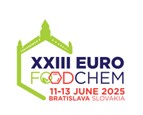Vedecký časopis - archív
Journal of Food and Nutrition Research
Súhrny čísla 4 / 2012
LICHTENBERG-KRAAG, B.
Saccharose degradation over time in stored honey: influence of time, temperature, enzyme activity and botanical origin
Journal of Food and Nutrition Research, 51, 2012, č. 4, s. 217-224
Birgit Lichtenberg-Kraag, Institute for Bee Research, Friedrich-Engels-Str. 32, D-16540 Hohen Neuendorf, Germany. E-mal: Lichtenberg.kraag@rz.hu-berlin.de
Súhrn: During the ripening process of honey, saccharose is converted in the bee hive to fructose and glucose by the enzyme invertase. The maximum content of saccharose in honey is limited by the European legislation. However, honey samples might show elevated levels of saccharose even though other quality parameters indicate that the ripening process did proceed normally. Honey samples with a saccharose content between 3.5% and 17% were analysed for conditions optimal for degradation of saccharose in stored honey. The honey samples were incubated at 15 °C, 21 °C and 37 °C for at most 9 months. After 9 weeks at 37 °C, degradation of saccharose was completed with a mean degradation rate of 3.42% per week, but invertase activity was reduced by almost 40%. At 21 °C, the average rate of degradation was 1.4% per month. At 15 °C, the process was slowed down to 0.81% saccharose per month. Analysis of saccharose degradation revealed a significant correlation to invertase activity (p < 0.01), but also to saccharose content (p < 0.001) and pH (p < 0.01). The results of this investigation can be used to instruct beekeepers how to handle honey with naturally elevated saccharose content to preserve a natural product conforming to legislation.
Kľúčové slová: honey; saccharose; invertase activity
Na stiahnutie:
jfnr-2012-4-p217-224-lichtenberg-kraag.pdf (PDF, 147.49 Kb, 3682x)










